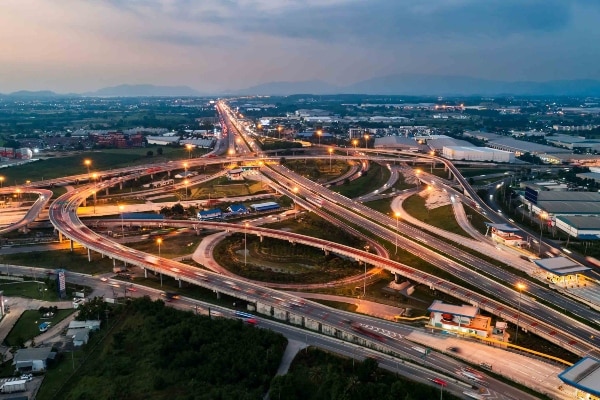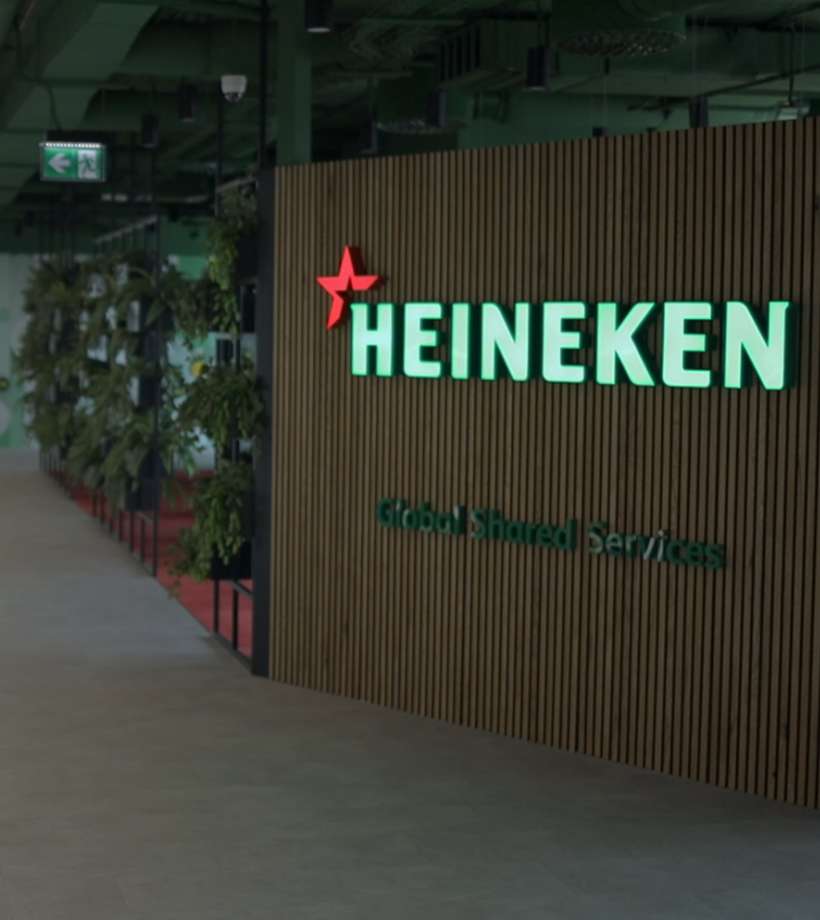-
Featured services
2026 Global AI Report: A Playbook for AI Leaders
Why AI strategy is your business strategy: The acceleration toward an AI-native state. Explore executive insights from AI leaders.
Access the playbook -
Services
Alle Services und Produkte anzeigenNutzen Sie unsere Fähigkeiten, um die Transformation Ihres Unternehmens zu beschleunigen.
-
Services
Network-Services
Beliebte Produkte
-
Services
Cloud
Beliebte Produkte
-
Services
Consulting
-
Edge as a Service
-
Services
Data und Artificial Intelligence
- KI und intelligente Lösungen
- Daten-/KI-Strategie und -Programm
- Data Engineering und Plattformen
- Daten-Governance und -management
- Datenvisualisierung und Entscheidungsfindung
- $name
- GenAI Platforms
- GenAI Industry Services
- GenAI Infrastructure Services
- GenAI Value Transformation
- Data und Artificial Intelligence
-
-
Services
Global Data Centers
-
Beliebte Produkte
-
Services
Application Services
-
Services
Sustainability Services
-
Services
Digital Workplace
-
Services
Business Process Services
-
Services
Generative AI
-
Services
Cybersecurity
-
Services
Enterprise Application Platforms
![]()
IDC MarketScape: Anbieterbewertung für Rechenzentrumsservices weltweit 2023
Wir glauben, dass Marktführer zu sein eine weitere Bestätigung unseres umfassenden Angebotes im Bereich Rechenzentren ist.
Holen Sie sich den IDC MarketScape -
-
Erkenntnisse
Einblicke und RessourcenErfahren Sie, wie die Technologie Unternehmen, die Industrie und die Gesellschaft prägt.
-
Erkenntnisse
Ausgewählte Einblicke
-
Die Zukunft des Networking
-
Using the cloud to cut costs needs the right approach
When organizations focus on transformation, a move to the cloud can deliver cost savings – but they often need expert advice to help them along their journey
-
So funktioniert Zero-Trust-Sicherheit für Ihr Unternehmen
Sorgen Sie dafür, dass Zero-Trust-Sicherheit für Ihr Unternehmen in hybriden Arbeitsumgebungen funktioniert.
-
-
Erkenntnisse
![]()
Copilot für Microsoft 365
Jeder kann mit einem leistungsstarken KI-Tool für die tägliche Arbeit intelligenter arbeiten.
Copilot noch heute entdecken -
-
Lösungen
Alle LösungenWir helfen Ihnen dabei, den Anforderungen an kontinuierliche Innovation und Transformation gerecht zu werden
Global Employee Experience Trends Report
Excel in EX mit Forschung basierend auf Interviews mit über 1.400 Entscheidungsträger:innen auf der ganzen Welt.
Besorgen Sie sich den EX-Report -
Erfahren Sie, wie wir Ihre Geschäftstransformation beschleunigen können
-
Über uns
Neueste Kundenberichte
-
Liantis
Im Laufe der Zeit hatte Liantis, ein etabliertes HR-Unternehmen in Belgien, Dateninseln und isolierte Lösungen als Teil seines Legacysystems aufgebaut.
-
Randstad
We ensured that Randstad’s migration to Genesys Cloud CX had no impact on availability, ensuring an exceptional user experience for clients and talent.
-
-
![Heineken Landing Page]()
NTT DATA und HEINEKEN
HEINEKEN revolutioniert die Mitarbeitererfahrung und die Zusammenarbeit mit einem hybriden Arbeitsplatzmodell.
Lesen Sie die Geschichte von HEINEKEN -
- Karriere
Topics in this article
If you’re running a fast-growing business in the Middle East or Africa, your customers will increasingly expect instant, secure and always-on digital experiences.
But is your IT team juggling aging systems, patchwork security measures and cloud services that don’t always work well together?
Modernizing your network, cloud and security lays the foundation for staying competitive — and the real magic happens when you improve all three areas together. Done in isolation, you might get small wins. Done in sync, you can transform how your organization operates, scales and serves customers. The key is making smart, coordinated decisions that bring your IT architecture, operations, security and budget together into a unified strategy.
But here’s the catch: The rules of the game aren’t the same everywhere. From complex data-sovereignty laws to unpredictable infrastructure and shifting geopolitical landscapes, the region’s unique challenges mean a one-size-fits-all approach simply won’t cut it.
So, how do you make this happen? Let’s break down a practical framework you can use to get there.
Build a cloud-first network architecture
A customer in Riyadh is checking your app, your design team in Cape Town is uploading huge files, and your operations center in Nairobi is running analytics. Without the right network foundation, these experiences will lag, stall or fail altogether.
If your applications live in the cloud, your network needs to keep up by being fast, flexible, secure and ready to scale, no matter where your users are located.
To build a foundation that’s ready for today’s demands:
- Switch to a software-defined wide area network (SD-WAN) with secure access service edge (SASE) so your traffic takes the smartest path, applications get the bandwidth they need and everything stays secure, even across multiple clouds.
- Ditch the old Multiprotocol Label Switching (MPLS) circuits for internet-first or hybrid WAN models that cost less and move faster.
- Connect multiple clouds — Amazon Web Services, Microsoft Azure, Google Cloud Platform, private clouds — with secure, high-performance links.
- Design for “cloud-first” from the start so your network is built for agility.
In the Middle East and Africa, this isn’t as straightforward as copying what works elsewhere. Data-localization laws and compliance rules change from country to country. And while public-cloud adoption is on the rise, private and hybrid clouds still dominate in the public sector and in industries such as financial services and healthcare.
This is why your network needs to be adaptable and ready to extend to the edge, supporting multiple clouds and evolving workloads without skipping a beat, and allowing you to quickly adapt to shifting regulations.
Integrate security at every layer
Modern networks and cloud setups give you speed and flexibility, but they can also open new security gaps. This is especially true in hybrid work environments, where employees, partners and customers may connect from anywhere, on any device.
To close these gaps, security can’t be something you “add on” later. It has to be built in from the ground up:
- Use zero trust network access (ZTNA) to make sure only the right users and devices can reach your applications, either in the cloud or on-premises.
- Adopt SASE to bring together your networking and security tools (including firewalls, cloud access security brokers and secure web gateways) in one streamlined platform.
- Use identity-centric and policy-based controls so your cloud and network security speak the same language.
When your security tools are integrated and easy to scale and manage, you’re better prepared for whatever’s next. The smartest approach is to consolidate onto SASE platforms that deliver ZTNA and the other tools I mentioned above — and to get your cloud and network teams sharing threat intelligence and governance from the same playbook.
- ALSO READ → 5 steps to secure your network from within
Use network as a service for lower costs and stronger governance
With network as a service (NaaS), you don’t have to buy, own and maintain your network hardware — you subscribe to it, just like you subscribe to cloud services, complete with SLAs. This keeps costs predictable, aligns with how you already pay for cloud and gives you more flexibility to adapt.
With NaaS, you can:
- Trade big capital expenses for predictable subscriptions and pay only for what you use.
- Reduce balance-sheet liabilities and avoid long-term lease obligations.
- Provision automatically and monitor centrally without owning a single router or switch.
- Bring finance and network teams together so budgets, usage and ROI are tracked in one place.
- Stay compliant across countries and industries, even when rules vary on data sovereignty or security.
By pairing NaaS with your cloud investments, you get financial agility, operational simplicity and clear accountability — a combination that’s hard to beat.
Prioritize performance, observability and automation
Your cloud can perform only as well as the network it depends on. If your network is slow or unpredictable, and you can’t see what’s happening inside it, your cloud applications will suffer — and so will your users.
To keep things running smoothly, you need visibility, automation and intelligence:
- See everything that’s happening, as it happens. With observability tools like Cisco ThousandEyes or Prisma Cloud from Palo Alto Networks, you know exactly how your applications are performing across the network and cloud.
- Automate the heavy lifting — from provisioning and scaling to fixing faults — using AI, machine learning and intent-based networking.
- Let AIOps spot the patterns and anomalies so bandwidth and routing can adjust on the fly, keeping performance at its peak.
When you track user experience alongside infrastructure metrics, you create a network that’s not just fast but also self-optimizing. resilient and ready for whatever your workloads throw at it.
Enter global and local strategic partnerships
When you’re operating across the Middle East and Africa, the right partnerships can make or break your transformation efforts. Local expertise is essential for navigating regulations, securing last-mile connectivity and building trust with government stakeholders.
The sweet spot? Combining on-the-ground know-how with global reach and technology muscle.
Here’s how to set yourself up for success:
- Choose partners who can cover all the bases — network, cloud and security — so you’re not juggling multiple vendors.
- Insist on a local support presence to meet SLAs, stay compliant and navigate cultural or language nuances.
- Look at joint ventures or public–private partnerships for large-scale projects, especially in government-led initiatives.
By teaming up with experienced managed service providers (MSPs), you reduce risk and gain the confidence that comes from having seasoned experts in your corner.
Align your talent pool with your operating model
Even the best technology can fail if you don’t have the right people and processes to run it. In many organizations, cloud networking, cybersecurity and automation skills are in short supply. IT teams are often siloed, making it hard to support the fast-moving demands of hybrid operations.
To modernize successfully, you need to rethink both your talent strategy and your operating model:
- Upskill your teams in cloud networking, automation and NetDevOps (applying DevOps principles to network management) so they’re ready for modern infrastructure.
- Break down silos between network, cloud and security teams by giving them shared tools, goals and playbooks.
- Adopt a shared service model or center of excellence to bring cloud and network operations together.
- Use regional training hubs and vendor-led academies offered by the likes of Amazon Web Services, Cisco, Fortinet and Palo Alto Networks.
- Build agile teams that can respond quickly to new opportunities and challenges.
Experienced MSPs can bridge the gaps by offering proven frameworks, tools and expertise to accelerate migrations, integrations and deployments.
With the right partner, your internal teams can focus less on maintaining infrastructure and more on pursuing innovation.




